Sorry Marvel, there's more to the Norse Gods than just Thor and Loki! Dive into the rich world of Norse mythology, exploring a diverse pantheon of deities beyond Thor and Loki, from the warlike Æsir to the nature-bound Vanir.
Ask the average person (or indeed a Marvel executive!) how many gods and goddesses there are in the Norse world, and you'll likely hear the same few answers. But in the pantheon of Norse Mythology, there are actually many Gods.
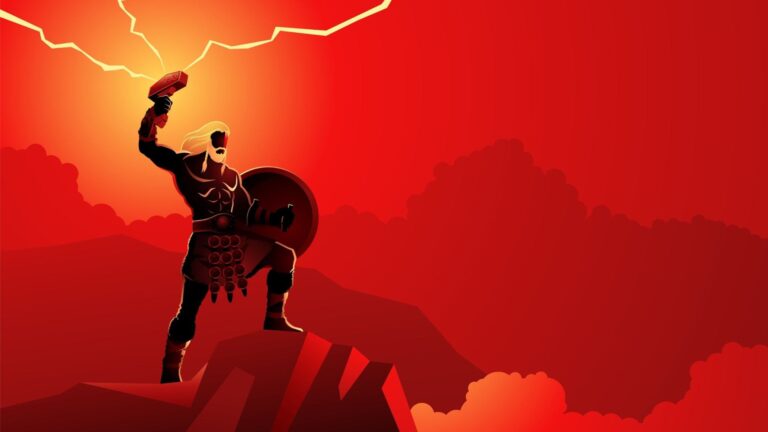
We're going to take a look at the most famous, plus a fair few you may never have heard of. Are you sitting comfortably? Then we shall begin!
Table of Contents
The legacy of Norse gods
While it may seem like the gods and goddesses of Norse mythology must have been popular for centuries, that's not strictly true. Little was known about them outside Scandinavia and Iceland until the 19th century.
With the advent of mass printing technologies, references to the myths, legends and heroes began to spread in European literature. This was especially so in Scandinavia, Germany and the UK.
More recently, such references began to appear in science fiction and fantasy literature. Eventually, it spread to other popular culture including RPG's, Japanese animation, and of course Marvel comics and movies.
The depiction of the Norse gods in the Marvel universe has caused controversy among scholars, but there's no denying the popularity of the films. So, let's take a look at the real stories behind them.
How many Norse gods are there?
It's hard to pin down exactly how many because the mythology was passed down orally for centuries. Often, this was in the form of poetry and/or the Icelandic sagas.
Read more: Creatures in Norse Mythology
The best attempts to write the mythology down come in the form of the Eddas and the Heimskringla by Snorri Sturluson. He was an Icelandic historian, poet and politician who lived in the late 12th and early 13th centuries.
The Gods can be split broadly into two tribes. The Æsir were associated with chaos and war, while the Vanir were associated with nature and fertility. The Gods are often considered together with the Jötnar (singular Jötunn), or Giants in English.
As an aside, this gives its name to one of Norway's biggest National Parks, Jotunheimen. Home to almost all of Norway's tallest mountains, ‘Jotunheimen' translates to the Home of the Giants.
Odin
As the ruler of Asgard – the realm of the Æsir, Odin is considered the All-Father of the Gods. His father was the Borr and his mother was the Jötunn Bestla.
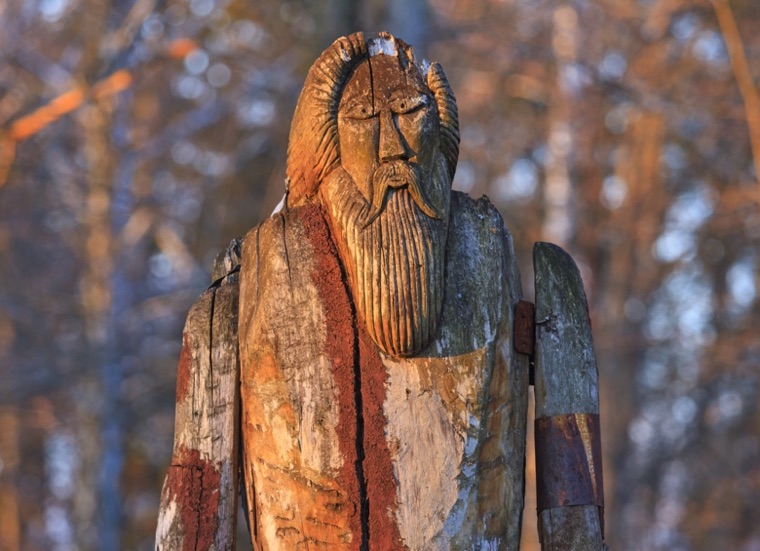
He's famous for riding into battle on his faithful eight-legged steed Sleipnir and wielding his dwarf-forged spear Gungnir which is said never to miss a target.
Odin, God of Wisdom, Poetry and War, has at least five sons, by four different partners.
His best known son is Thor who was conceived with Jörð, the personification of the Earth. His wife, Frigg, bore him Baldr and Höðr and with the Jötnar Gríðr and Rindr he sired Viðar and Váli.
In the popular culture of today, Odin is most commonly portrayed as an honourable leader and commander on the battlefield. But this a recent construct. He was not thought of in this way to the Norse.
Read more: Is Odin Older Than Previously Thought?
As a war-god, Odin is concerned not with the reasons for conflict or even its outcome. Rather, he's more interested in the chaos of the battle. He is particularly fond of berserkers and other warriors for whom the battle is the most important factor.
Odin is known in other languages as Woden and is the source of the English word Wednesday. Yep that's right, Wednesday is Woden's Day!
Thor
Probably the best known of the Norse Gods, thanks in no small part to Marvel basing a superhero on him, Thor, the God of Thunder, is the son of Odin and Jörð and the husband of the Goddess Sif.
He is physically the strongest of the Æsir and has fierce eyes, red hair and a full beard.
Quick to anger, Thor is said to protect Asgard and Midgard – the realm of humans – from the Jötnar and other threats. He travels mainly on a chariot pulled by the two goats Tanngrisnir and Tanngnjóstr.
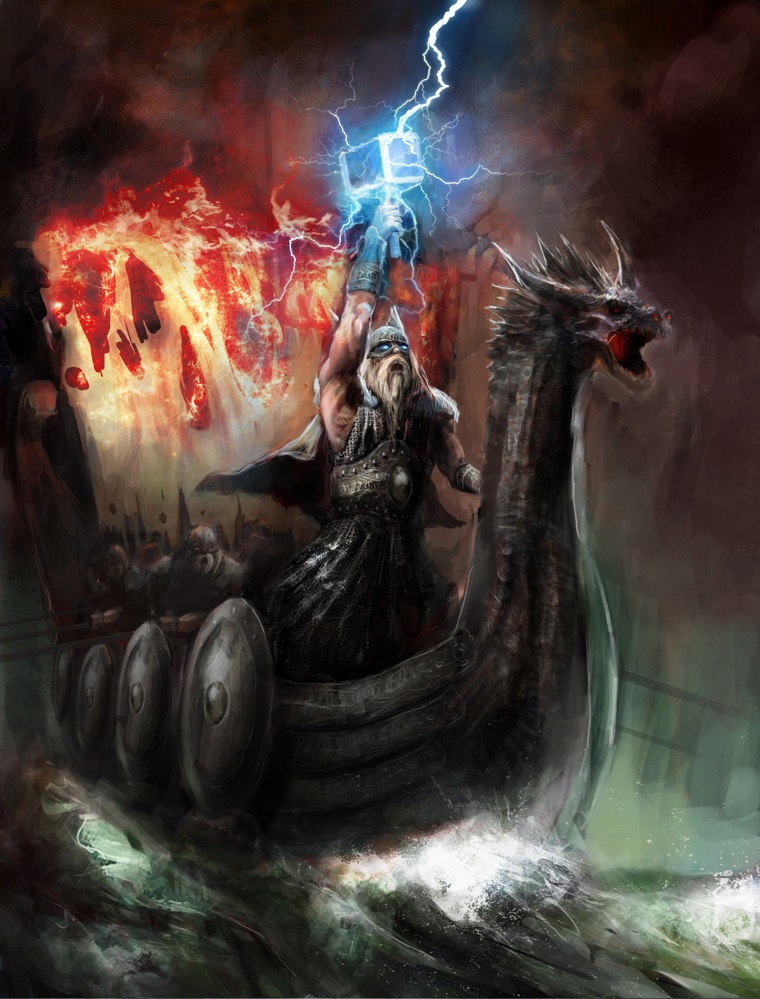
But perhaps he's best known for wielding the dwarf-forged hammer Mjölnir. This isn't just any old hammer, though. Norse mythology depicts the hammer as one of the most powerful weapons in existence. It's even capable of flattening mountains.
Many ancient hammer-shaped pendants have been found by archaeologists across Scandinavia. Historians and archaeologists have long believed that these pendants are in fact depicting Mjölnir.
Like his father, Thor also gives us a day of the week. As you'll know if you've ever watched Norse Gods, Thursday is Thor's Day.
Frigg
One of the best-known Norse Goddesses, Frigg is the goddess of marriage, family and motherhood. Frigg is Odin's wife and the mother of two of his children – Baldr and Höðr.
Ruling Asgard as Queen alongside her husband, she is the only other being allowed to sit on the throne – Hliðskjálf – and look out across the nine realms.
Read more: 10 Fun Facts About Frigg, a Beloved Norse Goddess
Continuing the family theme of naming our English days, Frigg gives rise to Friday or Frigg's Day.
Unlike some of the other names of this list, Frigg is much less known outside of Scandinavia. Within the region, the name is popular. She even lends her name to an Oslo sports club.
Týr
The original God of war, Týr is considered the bravest of all the Gods. Taking a strong interest in justice and fair treaties, he's often considered the God of War and Peace and the one who decides who will win battles. His parentage is unclear.
Týr has only one hand due to the other hand being bitten clean off by the wolf Fenrir.
Showing his bravery, Týr placed his hand in the beast's mouth to distract it while the other Gods bound it to a rock. When Fenrir realised he'd been tricked, he bit Týr's hand clean off.
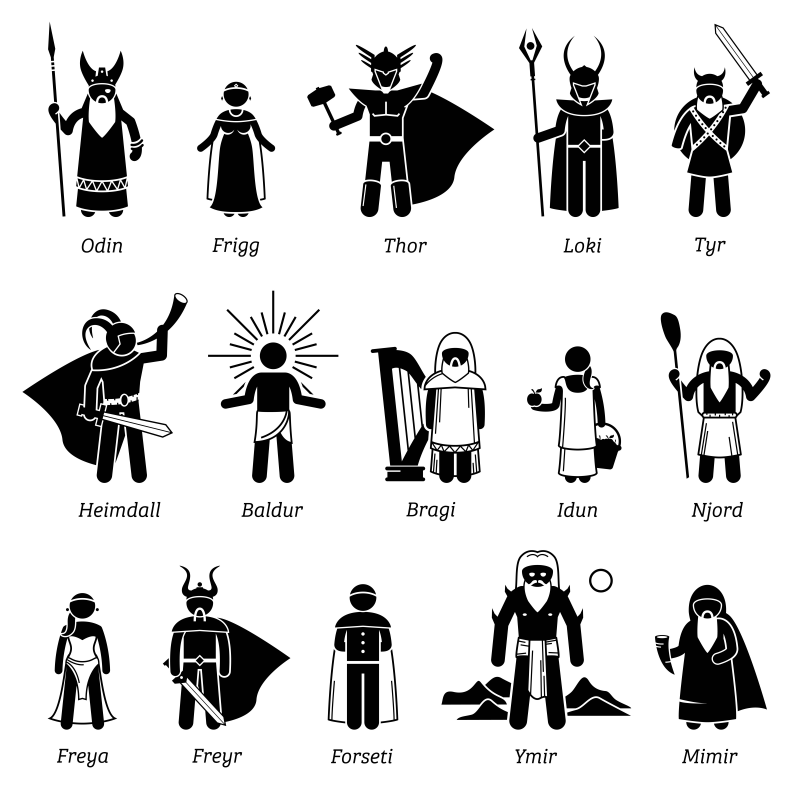
Completing our Days of the Week theme, Týr, also known as Tiw, is the origin of Tuesday.
Heimdallr
Another God known to fans of the Thor movies, Heimdallr, or Heimdall, is the guardian of the Bifröst bridge – the rainbow that connects the land of mortals – Midgard – with the land of the Gods – Asgard.
Heimdallr has a horn known as the Gjallarhorn, which he blows to warn of impending trouble.
His senses are so good that he can hear the wool grow on sheep and the grass grow from the ground. He can see all the way to the ends of the Earth making him the best protector of the Gods.
Heimdallr is the son of nine different mothers and was known as the White God.
Loki
In the comic books, Loki is the adopted brother, and arch-nemesis, of Thor but in Norse mythology he is the son of Laufey and the Jötunn Fárbauti and is Odin's blood brother. He is known as the God of Trickery and Mischief and The Father of Monsters.
He sired the vicious wolf Fenrir and the serpent Jörmungandr as well as Odin's eight-legged horse Sleipnir. He's also the father of the Goddess Hel who reigns over the realm of the dead.
Loki is not usually considered one of the Æsir, due to his trickery. He caused, amongst other things, the death of Baldr, and the Æsir can never be sure whether he's assisting them or hindering them.
Baldr and Höðr
The God of Light and Radiance, Baldr, and the God of Darkness, Höðr, are twin brothers, sons of Odin and Frigg.
Baldr is the most beloved of the Gods who once had a nightmare that he would be killed. His mother Frigg then demanded that all things in the entirety of the nine realms vow not to harm him.
Unfortunately, the mistletoe did not vow and when Loki discovered this, being an evil trickster, he convinced Höðr to throw a spear of mistletoe, which pierced Baldr's heart and thus Baldr ended up in the realm of the dead.
It's not all bad though because at Ragnarok – the Day of Judgment – the realm of the dead will open and, when Odin dies, Baldr and Höðr will rule in his place.
Vidar
The son of Odin and the Jötunn Grid, Vidar is the second strongest of all the Æsir after Thor and lives in a great hall in Asgard called Vidi. Despite his strength, Vidar is a peaceful god and known to enjoy sitting in silence or working on creating a special shoe.
Though it might sound slightly dull, this special shoe – fashioned from the leftover bits from all the shoemakers in Midgard – will play a key role in avenging his father's death after Ragnarok.
Vidar will kill the fearsome wolf Fenrir and live on after Ragnarok to create the new world that comes after.
Vali
Vali is the youngest son of Odin, and the Jötunn Grid. He is generally considered as an archer and representing the beams of sunshine – like arrows – that grow stronger as winter draws to a close.
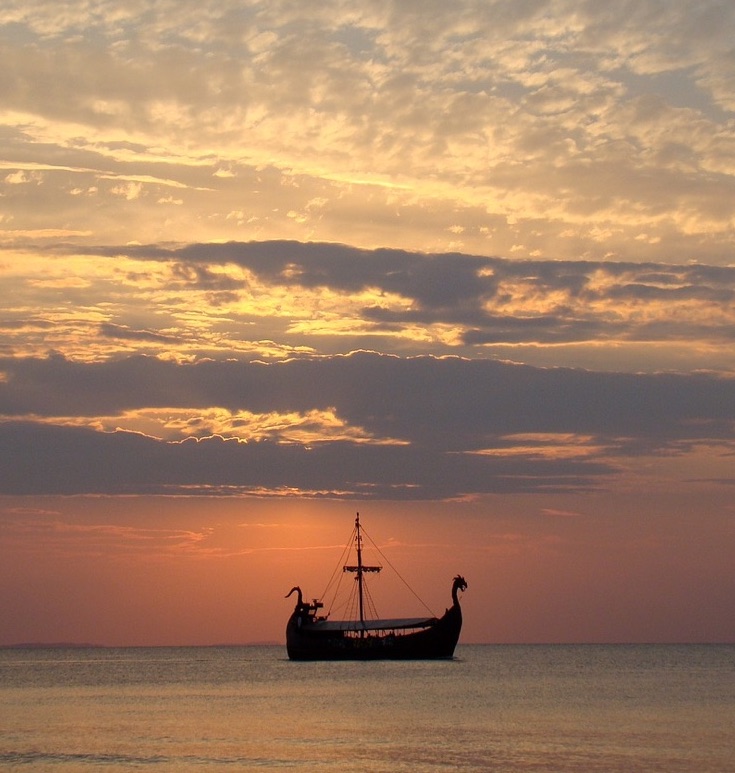
Vali was conceived specifically to avenge the death of Baldr, which he did by slaying Hodr. He is another survivor of Ragnarok. If you're wondering about pronunciation, use the English word valley and you're most of the way there!
Bragi
Bragi is the learned and wise bard of Valhalla. He may have been one of Odin's sons – it's unclear from the original source material – but he is considered by many to be a God of Poetry and Music. His name, in fact, comes from the word Bragr meaning poetry.
Bragi possesses a very long beard and has runes carved on his tongue. He is often said to have been married to the Goddess of youth Idunn.
Read more: A Viking Timeline
Over the years there were many Viking poets called Bragi, the most famous being Bragi Boddason. This may be attributed to the god Bragi or it's possible that the god Bragi is an immortalisation of one of the poets.
Iðunn
With a name meaning ‘the rejuvenating one', the goddess of youth, Iðunn, is the dispenser of the fruit that gives the gods their longevity. Iðunn is said to have been married to the poet and jester Bragi.
The fruit she dispenses are generally depicted as golden apples, though this is unlikely as apples didn't exist in Scandinavia at the time!
The word epli, now meaning apples, was a general word for fruit and nuts. Either way, whatever the fruit may have been it certainly managed to keep the gods going for millions of years!
Njord
God of the Wind, Seafarers, Coasts, Inland Waters and Wealth – though not the God of the sea – Njord is a member of the Vanir rather than the Æsir.
After the end of the war between the Vanir and the Æsir, Njord was one of the gods sent to Asgard as a token of truce.
Njord lives in a house on the seashore in Asgard called Noatun. Though he was briefly married to the giantess Skadi, Njord's only children, Freyr and Freyja, were born to his sister Nerthus.
Remember the popularity of Frigg within Scandinavia? The same is true of our friend Njord! Among others, he lends his name to a Copenhagen-based advertising agency and even a male grooming brand!
Have you ever taken the Norwegian coastal voyage? If so, perhaps you've even met Njord! He often makes an appearance on board to “welcome” anyone who has never crossed the Arctic Circle before.
Freyr and Freyja
The children of Njord and Nerthus, Freyr and Freyja are also Vanir who were sent to the Æsir after the war between the two tribes.
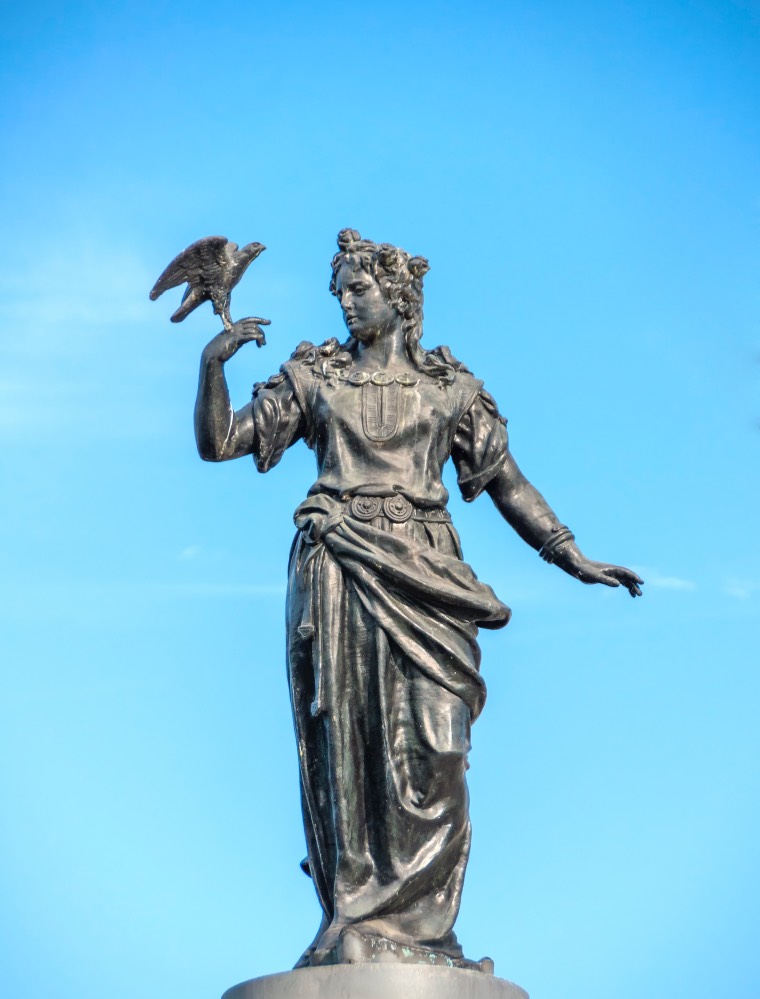
They're gods of fertility and Freyr is usually depicted with a large phallus! He's also the ruler of Alfheim and Lord of the Elves.
Freyja, on the other hand, was accused by Loki of having slept with all of the Gods and Elves. Beyond that it gets even more strange because there's evidence to suggest that Freyja and Frigg – Odin's wife – are in fact the same goddess!
As always, the family tree of the Norse Gods and Goddesses can be a little hard to follow. Regardless, it's fair to say that wherever fertility is involved – including bountiful harvests and wealth – these two are never far away.
Ullr
Ullr (or Ull) is the God of Winter, Hunting. Hand-to-hand Combat and the Willow Tree. The pronunciation is ull-r, with the emphasis on the first syllable. However, the name is often written as Ull in English language texts.
He's the son of Sif and the stepson of Thor. He is married to Skadi – the Goddess of Winter – and was said to be a great archer and skier, often using his shield like a modern-day snowboard. For that reason, in modern times, he's considered the God of Skiing.
In Scandinavia, particularly Sweden, there are several place derived from Ullr. Historians believe this shows the importance of Ullr among the old gods.
Forseti
Forseti's name means President in modern Icelandic and the God of that name is the God of Justice and a speaker of law. A peaceful man who is often found meditating, he would preside over disputes between the Gods and Goddesses of Asgard.
The son of Nanna and Baldr, Forseti lives in a silver and gold house called Glitnir – Shining – which is said to shine so much that its radiance can be seen for miles around.
Hermod
Hermod may or may not have been a son of Odin. Known as the Messenger of the Gods, Hermod was the fastest of all Asgard. After the death of Baldr he volunteered to ride to Niflheimr on Odin's steed Sleipnir.
Once there he begged the Goddess of the Underworld – Hel – for his release. Hel agreed to this on the tricky condition that all of creation weep for his loss, which they did.
All except for the Jötunn Þökk – widely believed to be Loki in disguise – who refused. As such, Baldr's fate was sealed.
Hel
The Goddess of the Underworld, Hel was the daughter of Loki and the Jötunn Angrboda.
Hel is greedy, capricious and uninterested in the concerns of both the living and the dead. But then, living in the deep, dark roots of the world tree can't be that much fun!
In one of the Icelandic sagas, she is depicted as half-blue, half-flesh coloured with a gloomy appearance.
However, one historian believes that Hel is not actually a person at all, rather a place. Outside of one saga, most references to Hel are of being “in” rather than “with”. It is believed by some that the name actually means grave.
Which is your favourite Norse God, and why? Did you enjoy this article? If so, why not share it on Pinterest? We've got just the pin for you. Just hit those social sharing buttons.



We are traveling to Norway next summer. Are there places in Norway which have specific connections to Norse mythology, e.g. did they build buildings/temples, erect statues to honor their gods like the Greeks and Romans did?
no, my ansestors had temple in sweden which is in uppsala where they went every year and celebrated the gods
I just found out that I am 75% nortic . I did an ancestry test so I am very interested in my nortic back ground and I’m trying to find a Valkyrie for a tattoo
Fan of the TV series Vikings and wanted to learn more about their myths
Thanku mindy
I love this site. As far as i am lead to believe my family come from norway. I dont know much more. My parents died when i was young. My family name was ericsson-sandifjord it was changed when i was young so i was told to ericsson-sandford. English people could not pronounce it or spell it so my father changed it to help them. I am an englishman and proud to be so but my roots are viking and norsk
Sandefjord is a town not so far from Tønsberg where I live (about 100 km south of Oslo). The 3 most famous viking (long-)ships in the world were all found in this area called Vestfold (meaning “west of the fold=fjord”). It is packed with viking history, but not many tourists know this.
If you know what to search for, there is some information to be found in English (or you could always use Google translate). Scroll down this site where Sandejord is mentioned: https://www.visitvestfold.com/en/articles/The-Viking-Trail-through-Vestfold/
I just found out that I am 75% nortic . I did an ancestry test so I am very interested in my nortic back ground and I’m trying to find a Valkyrie for a tattoo . Is Lindquist a nortic name
Missing from the information of Þór are his descendants.
Þór has 3 children, fathered with two women.
He has the son Magni with Járnsaxa (jötunn)
He has the daughter Þrúður (Þrúðr) with Sif
He has the son Móði (mother uncertain).
Magni at only 3 days old saves Þór’s life when Þór kills Hrungnir and Hrungnir falls down and his foot sits across Þór’s throat, leading to Magni being the only one able to lift it off and save Þór’s life.
Móði and Magni will inherit Mjöllnir when Þór falls at the death of Jörmungandr.
Can you post a family tree please?
Ullr was not married to Skadi. Saadi was married to Norjd the Norse good of the sea. Their marriage was based upon her picking her husband based upon the appearance of their feet, thinking she had chosen Baldar but it was revealed to be Norjd.